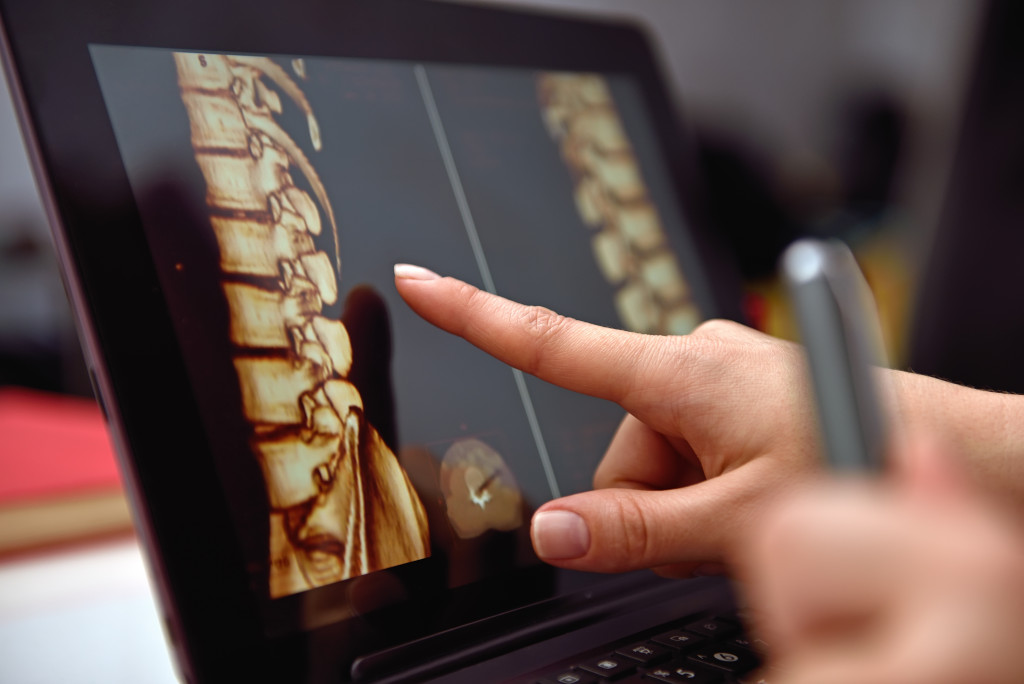- Advanced imaging technology can provide accurate assessments of bone density and detect osteoporosis or other bone diseases early.
- Ergonomic furniture and equipment, such as chairs and standing desks, can help maintain good posture.
- Regular weight-bearing exercise or focusing on core strength can reduce the risk of falls and fractures while improving posture.
- Taking proactive steps to improve bone health can lead to a lifetime of strong bones and good posture.
Maintaining good posture and bone health is essential to living a healthy, active life. As people age, their bones become more fragile, making them more prone to injuries and falls. Fortunately, with modern advancements in technology and research, there are now many effective ways to support your posture and bone health.
Imaging Technology
One of the most significant advancements in modern bone health is imaging technology. Advanced imaging techniques now allow you to see inside your body, giving you a clearer understanding of your bone health and the necessary steps to improve it.
DEXA Scan
One such imaging technique is the DEXA scan, which stands for dual-energy X-ray absorptiometry. It is a non-invasive imaging test that measures bone mineral density. The scan provides an accurate assessment of your bone health and can help identify osteoporosis or other bone diseases at an early stage.
A modern DEXA scan is a quick and painless procedure that uses low doses of radiation. The process takes about 10 to 20 minutes and provides a detailed report of your bone density measurements, including your T-score and Z-score. Your T-score compares your bone density to that of a healthy young adult, while your Z-score compares your bone density to someone your age and sex. By having these scores, you can understand the strength of your bones and better plan for future bone health.
Digital X-rays
Before, X-rays were used primarily to detect broken bones or fractures. Today, digital X-ray technology can also help you evaluate your posture and alignment in more detailedly. Digital X-rays allow for exact images of your spine, showing even the slightest details in bone structure and movement.
Modern hospitals and clinics can use digital X-rays to better analyze your posture and detect any misalignments or deformities that could put your bones at risk. With these images, you can work with a medical professional to create an individualized plan for strengthening your posture and bone health.
Ergonomics
Another modern technique to improve posture and bone health is ergonomics. Ergonomics studies how people interact with their environment, focusing on creating a safe and comfortable workspace. This includes the design of furniture, equipment, and other items.

Ergonomic Chairs
An ergonomic chair is one of the most crucial ergonomic tools for posture support. These chairs are specifically designed to support the natural curvature of your spine, promoting good posture and reducing the risk of back pain. They have adjustable features that allow you to customize your sitting position, such as height, backrest, and armrests. Investing in these chairs can create an environment that encourages good posture.
Standing Desks
Recent studies have also shown that standing desks can help improve posture and reduce back pain. Standing desks allow you to adjust the desk height so you can stand while you work. They provide additional support for your lower back and reduce the strain on your neck and shoulders, which can help you maintain an upright posture.
Under-desk Treadmills
Another way to stay upright and active is with an under-desk treadmill. This device allows you to walk or jog while you work, providing low-impact exercise for your bones and joints. The movement helps reduce the risk of injury, maintain good posture, and increase focus and productivity.
Exercise
Finally, regular exercise is another essential technique to improve posture and bone health. Exercise helps build and maintain strong bones and muscles, preventing bone loss and improving balance and coordination.
Weight-Bearing Exercises
These exercises are an effective way to strengthen bones and improve bone density. These exercises include any activity that requires you to work against gravity, such as walking, jogging, dancing, and strength training. Weight-bearing exercises can help reduce the risk of falls and fractures, especially in older adults.

Yoga and Pilates
Yoga and Pilates are two popular forms of exercise that can also improve posture and bone health. These exercises focus on building core strength, improving flexibility, and promoting relaxation. Practicing yoga or Pilates regularly can help improve posture and reduce the risk of back pain.
In conclusion, maintaining good posture and bone health is essential to a healthy, active life. With modern advancements in technology and research, many effective ways exist to support your posture and bone health. By taking proactive steps to improve your bone health, you can enjoy a lifetime of strong bones and good posture.

